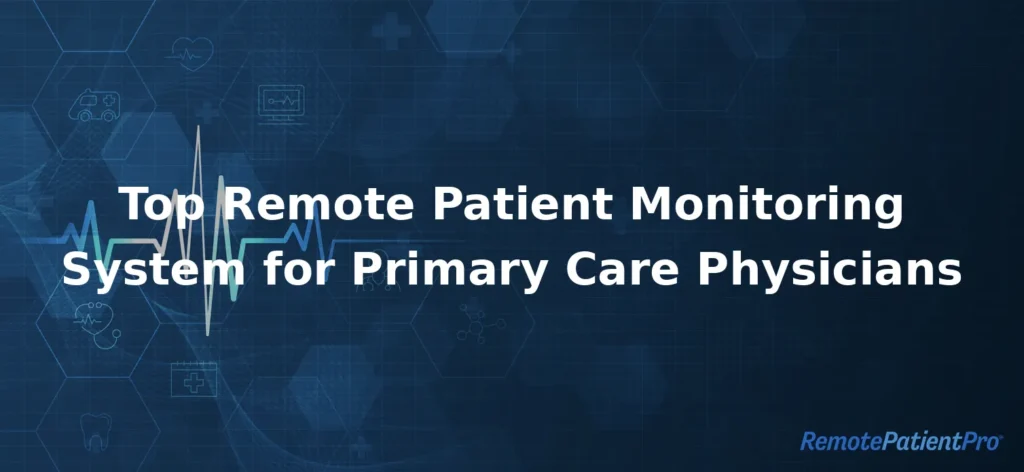Top Remote Patient Monitoring System for Primary Care Physicians
In today’s healthcare environment, primary care physicians face increasing demands to provide personalized, data-driven care while managing growing patient populations. Remote patient monitoring (RPM) has become essential for achieving these goals. By providing real-time insights into patient health, these systems empower PCPs to deliver proactive care, improve outcomes, and streamline their workflows. Let’s explore their key features, as well as why RemotePatientPro™ offers the top remote patient monitoring system for primary care physicians.
Why RPM Systems Are Essential for Primary Care Physicians
- Improved Patient Outcomes
RPM systems enable timely interventions by continuously recording health data, thereby reducing hospitalizations and complications. - Advanced Workflows
Automating data collection and analysis saves time, allowing PCPs to focus on high-priority patients. - Enriched Patient Engagement
RPM tools empower patients to take active roles in managing their own health and committing to treatment plans. - Better Chronic Disease Management
Conditions like diabetes, hypertension, and COPD can be monitored effectively for improved long-term outcomes. - Increased Practice Revenue
RPM services can be reimbursed under Medicare and other programs, creating new revenue streams for primary care practices.
RemotePatientPro: The Top Remote Patient Monitoring System
Features:
- Advanced monitoring devices for vitals like blood pressure, glucose, and oxygen saturation.
- Intuitive dashboards for real-time data access.
- Customizable alerts and reporting features.
Best For: Primary care physicians seeking tailored RPM solutions.
How to Choose the Right RPM System for Your Practice
- Identify Your Needs
Determine which conditions you’ll monitor and what features are essential for your practice.
- Evaluate Ease-of-Use
Opt for systems with user-friendly interfaces for both patients and providers.
- Check for Integration
Ensure the RPM system integrates appropriately with your EHR and existing workflows.
- Consider Scalability
Choose a platform that can grow with your practice and accommodate increasing patient volume.
- Assess Costs and Reimbursement
Verify the platform’s cost-effectiveness and compatibility with reimbursement programs like Medicare.
Learn more about how RPM can transform care delivery from the American Medical Association.
How RemotePatientPro Supports Primary Care Physicians
We provide the following tailored RPM solutions to help PCPs.
- System Customization
We evaluate your needs and demonstrate how our system can address them.
- Implementation
Our team ensures smooth integration between our RPM software and your existing workflows and EHRs.
- Training
We provide comprehensive training for your clinical team and patients to verify that they are using technology correctly for its maximum benefit.
- Ongoing Support
From troubleshooting to updates, we’re here to keep your RPM program running smoothly.
Frequently Asked Questions
Q: What conditions can RPM systems monitor?
A: RPM systems can monitor various conditions, including hypertension, diabetes, COPD, heart disease, and obesity.
Q: Are RPM systems cost-effective for small practices?
A: Yes, many systems offer scalable solutions and reimbursement opportunities through Medicare and other programs.
Q: How does RemotePatientPro simplify RPM implementation?
A: We provide end-to-end support, from selecting the right system to training your team members and patients on how to use it effectively.
Enhance Your Practice With Remote Patient Monitoring
Remote patient monitoring helps primary care physicians deliver proactive, efficient care. With the right system, you can improve patient outcomes, streamline workflows, and even increase revenue.
RemotePatientPro is the best RPM solution for your practice. Contact us today to learn more.

